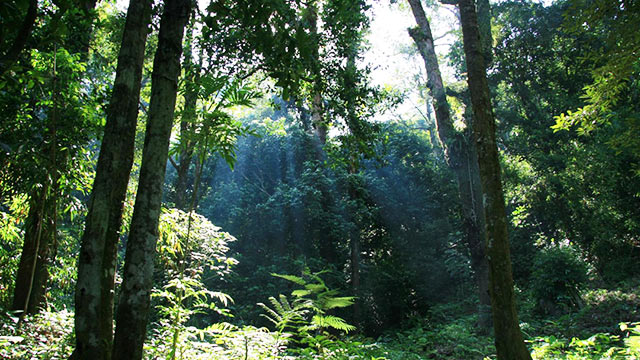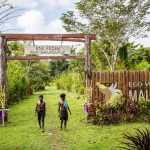Jakarta (Greeners) – Proper development of biodiversity parks will increase local biodiversity and support plants and animals conservation outside forest areas. In addition, the parks can also protect endangered plant species and its pollination in secondary forest areas due to land use changes especially in areas between 0 and 1000 meters, said director of Essential Ecosystem Management at Ministry of Environment and Forestry, Antung Deddy Radiansyah, in Jakarta, on Thursday (30/3).
Up to date, there are 72 parks have been established in the country with 15 already formed its own institution and declared as essential ecosystem areas.
“Biodiversity parks can become ex-situ conservation areas apart from botanical gardens, especially for local plants,” said Radiansyah adding that the biodiversity parks development was stipulated under Environment Ministerial Regulation issued in 2012.
READ ALSO: Botanical Gardens Not Only Aim for Research
Biodiversity parks, he added, applied the concept of determining locations of endemic and endangered plants or planting plants with its supporting ecosystem to protect the relationships between plants and their pollinators to produce strong and healthy seeds.
Roemantyo, ecologist and conservationist from Biodiversity Foundation or Kehati, said that local means plants used in local areas meanwhile endemic refer to plants originally coming from the areas and could not be found in other places.
“Endangered means plants categorized under international institution such as International Union for Conservation of Nature (IUCN) as hard to find species,” said Roemantyo.
Furthermore, he said that parks development was crucial as Indonesia has 30,000 to 40,000 types of plants or 15.5 percent of total world’s species. At least 85 percent of the total requires pollination which could be supported by biodiversity parks development.
READ ALSO: Biodiversity Requires All Stakeholders’ Support
The difference between biodiversity parks and botanical gardens, he said, laid on the species planted in the areas. For biodiversity parks, the focus is saving local species from biopiracy and also serves as the catalog for local genetic resources information. Meanwhile, botanical gardens usually serve as research sites and store as many as collections as possible for scientific purposes.
“Biodiversity parks also meant to observe plants and animals and provide economical value for local people,” he said. “Meanwhile, biodiversity parks also serve as nursery, breeding and science and technology development center, education and socialization, natural touristic site and green open space.”
READ ALSO: Biopiracy Threatens Biodiversity in Indonesia
Based on Ministerial Regulation issued in 2013, biodiversity park is defined as local natural resources site outside forest areas with in-situ and/or ex-situ conservation roles, especially for plants which rely on pollination, that support their sustainability.
From all 72 biodiversity parks, nine has already being developed since 2008 by the ministry :
1. Central Java Biodiversity park, located in Semarang State University of Semarang, established in 2008.
2. West Sumatra Biodiversity park, located in Andalas University’s Arboretum of Padang, established in 2009.
3. Liwa Lampung Biodiversity park, located in Lumbok Integrated Tourism, established in 2009.
4. Yogyakarta Biodiversity park, located in Tepus village, established in 2009.
5. West Java Biodiversity park, located in Kiara Payung, Sindang Sari village of Sumedang district, established in 2010.
6. East Java Biodiversity park, located in Wonosalam village of Jombang district, established in 2010.
7. North Sulawesi Biodiversity park, located in Paniki Dua village of Manado, established in 2010.
8. South Kalimantan Biodiversity park, located in an ex-mining site of Banjarbaru district, established in 2011.
9. Central Sulawesi Biodiversity park, located in Muhammadiyah University of Sigi district, established in 2012.
Other biodiversity parks were set up in Banten, Bengkulu, Central Java, East Java, Bangka Belitung Island, and North Maluku. In addition, Nanggroe Aceh Darussalam, South Sulawesi, Central Sulawesi, Southeast Sulawesi, North Sulawesi, West Sulawesi and North Sulawesi.
Reports by Danny Kosasih



















































